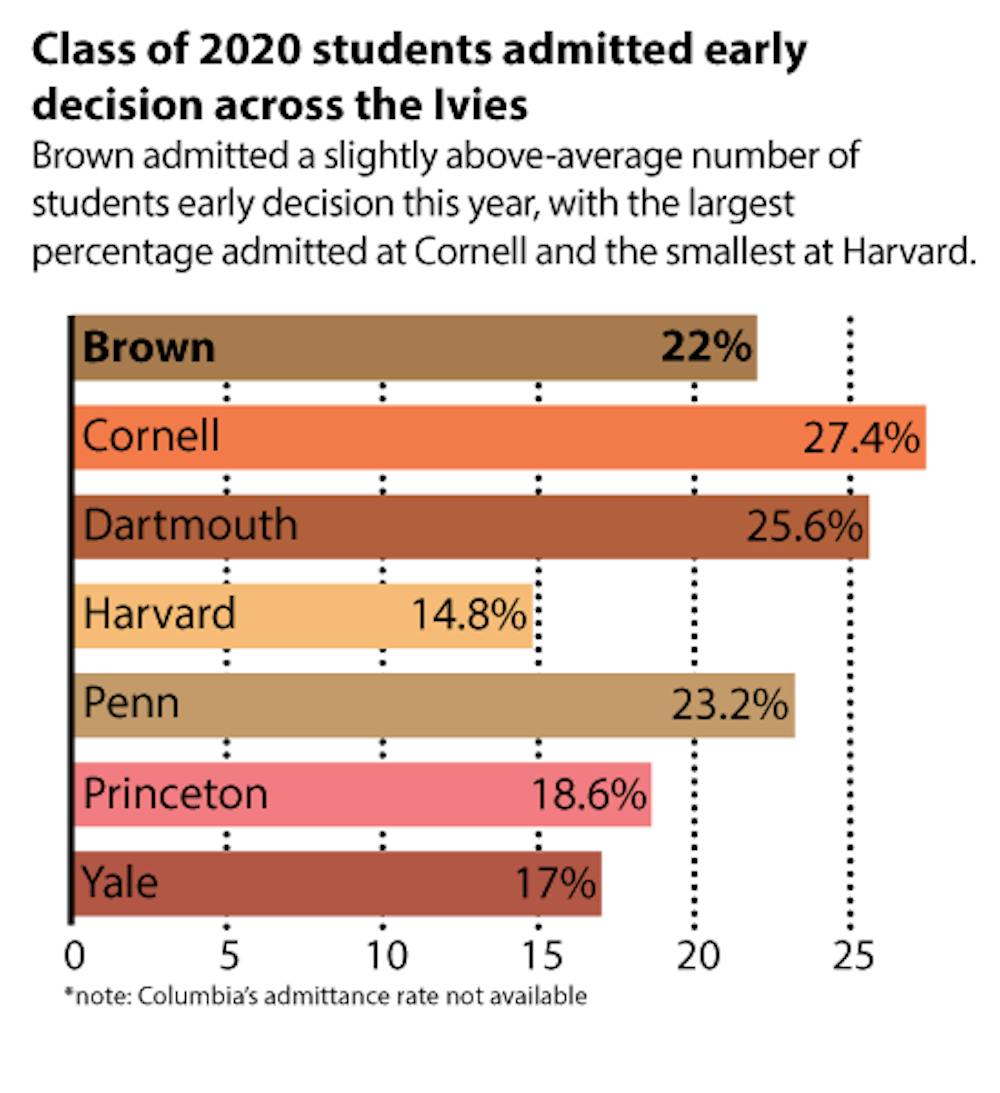With the Class of 2020 admission cycle, the University’s early decision acceptance rate continued to climb, jumping to 22 percent from 18.5 percent for the Class of 2017.
Dean of Admission Jim Miller ’73 credits the higher acceptance rate to the deep pool of talent applying early to Brown. The quantity of applicants has not increased dramatically through the years, but the strength of the individual applicant has increased over time, he said.
Brian Taylor, director of Ivy Coach, offered a different perspective. The number of applications that the University has received in total has risen steadily over the years, but the University is not receiving more qualified applicants, he said.
“Colleges are getting better and better at getting unqualified students to apply,” Taylor said. This allows the University to tout “the most competitive class ever,” he added.
This process is meant to boost a school’s U.S. News and World Report ranking, Taylor said. “There is no bigger impact (on admission) than the annual rankings,” he added.
In some parts of the world, the U.S. News and World Report rankings system is “the Bible” of college admission and a deciding factor for many students applying, he said.
Though universities may care about their rankings, several undergraduates said that the rankings did not influence their decisions to attend Brown.
Elaine Tran ’18 said she applied to Brown for its inviting atmosphere and open curriculum rather than its spot on the list.
Similarly, even though Zafreen Siddiquee ’19 “saw the rankings briefly on Facebook,” it did not affect her decision to apply to the University either, she said.
Universities can improve their rankings on the list by lowering their overall acceptance rates, which account for both their early and regular decision acceptance rates. A lower acceptance rate improves their student selectivity scores, which account for 12.5 percent of the final ranking, according to U.S. News and World Report’s website.
When universities admit more students through a binding early decision process, they have to admit fewer students during regular decision, thereby lowering their overall acceptance rate, Taylor said. Universities are guaranteed 100 percent matriculation from early decision applicants because of their binding commitment to attend the school.
In the regular admission phase, the University expects 45 to 50 percent of students to matriculate, Miller wrote in a follow-up email to The Herald. Brown and its peer schools then have to admit more students than they expect will eventually attend, increasing their acceptance rate and lowering their selectivity score for the rankings.
Though this phenomenon occurs at all highly selective universities, Penn has used this tactic most blatantly, Taylor said. Early decision applicants filled 54.4 percent of Penn’s Class of 2019, according to the Daily Pennsylvanian. Comparatively, Brown filled 38 percent of its class through early admission for the Class of 2019, the lowest percentage among Ivy League universities with binding early admission processes.
Miller predicts the number of early applicants and acceptances will continue to rise in the coming years, though there are no current initiatives to increase early applications.





